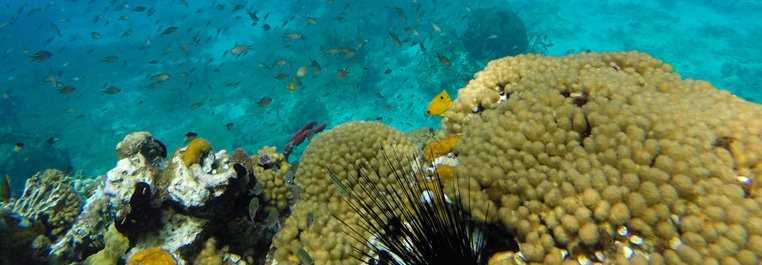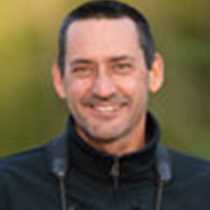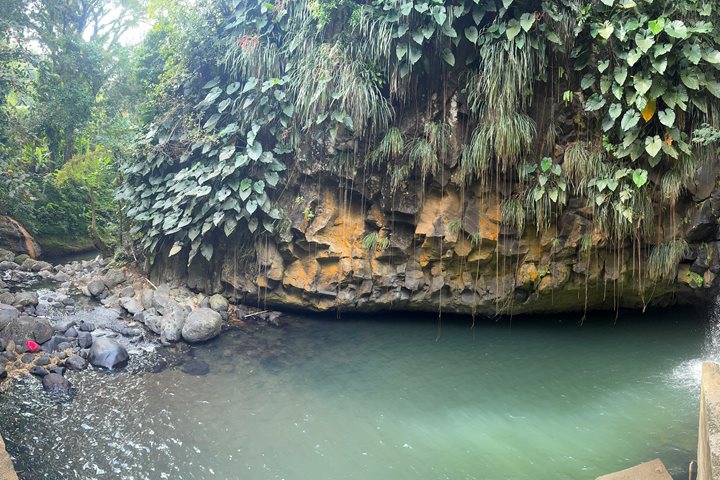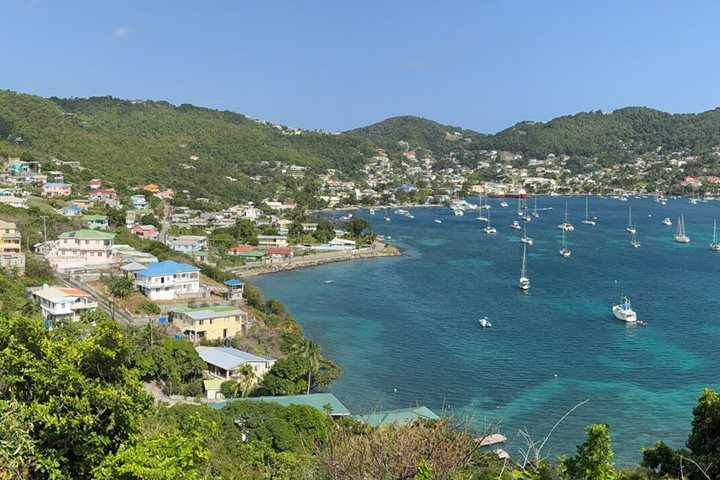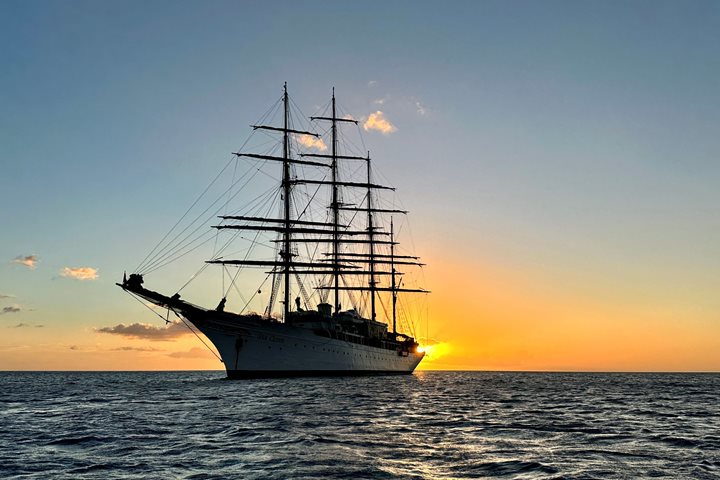We dropped anchor off the petit island of Terre de Haut (the “high land”) at 7 a.m. This island is part of the archipelago known as the Isles of the Saints. Columbus, first saw them on All Saints’ Day, 1 November 1493, and named them after the feast. There was a slight misty rain that lasted just a few moments before the blue sky and gold sun returned. After breakfast we boarded the tender for the quick ride into the village of “Bourg” (“city). It was immediately apparent to all that the economics of this island are radically different than its close neighbor Dominica. The Saints are part of France, specifically a region in the Department de Guadeloupe and as a result receive all of the economic supportas if it was on mainland France. The lovely upscale clothing and jewelry shops testify to the wealth and the French tourist industry. The cost of living here is high—for example, a glass of orange juice this morning at a cost of 4.5 Euros or approximately $5. Most goods must be brought in by air and ship. The island has only 1800 permanent residents. Many of whom I suspect receive some sort of income from the French Government.
Our first stop of the morning was to travel up to the highest point on the island and visit the Fort Napoleon. This defensive fort was actually built during the reign of Napoleon III, between 1841 and 1867. The earlier fortresses on this site were all destroyed to build the present bastion. The fort is a wonderful place and is today chiefly a botanical garden with many of the representative species of flowering trees on the Lesser Antilles represented. But in addition to the trees there are wonderful cacti, euphorbia, aloes and frangipani.
We also visited the nesting areas of the very large land iguanas. Today we spotted about four of these wonderful beasties, the largest of which was about three feet, sunning themselves in the branches of the trees. We were able to see the large island of Guadeloupe just a few miles to our north. Of particular importance in the fort was the display of the Battle of the Saints—the largest marine battle to ever take place in the Caribbean. Tom Heffernan explained the importance of this naval battle for the ensuing conflict between France, England, and the nascent American republic. This melee that extended from 9 April until 12 April 1782 pitted a French and Spanish fleet (35 ships of the line) under the Comte de Grasse (the Admiral who successfully blockaded the British at the Battle of Yorktown) against the English under Admiral George Rodney (36 ships of the line). The combined Franco-Hispanic plan was to sail from Martinique and seize England’s richest sugar producing island of Jamaica. Rodney heard about the plan and caught up with the French in the straights between the Saints and Dominica. The battle was hard fought but the English were victors and were able to break the French by “crossing the T,” meaning they sailed through the French line of ships thus breaking their forces in half and were thus able to fire their canons from both the starboard, port and stern sides. The deaths and causalities were appalling. Every officer on de Grasse’s flagship the Ville de Paris was either wounded or killed. De Grasse was the only one not to have been hit. Some of our intrepid guests also took the opportunity once their visit of the city was over to go snorkeling in the small sparsely settled island across the bay where they received instruction from Patti O’Brien, our able Assistant Expedition Leader, and Mike Greenfelder.
After lunch the sailors went aloft and raised the sails. We had a fresh but not overly strong breeze and were sailing past the island of Dominica by 3:30 p.m. Mike Greenfelder gave a very good talk on the reef fishes of the Caribbean. After Mike’s talk we all adjourned to the port side for a fabulous afternoon tea.
This evening we were treated to a very informed talk by Tom O’Brien on the fascinating and intricate history of this glorious vessel and its role in history over the past 85 years. Today’s activities continued and we were all invited to visit the original stateroom cabins. It is difficult to imagine that Hutton and Post built the Sea Cloud for themselves and their one daughter Dina Merrill. Dinner was served after the open house. This evening we sailed through the night so as to make our next port, St. Lucia by early afternoon.

